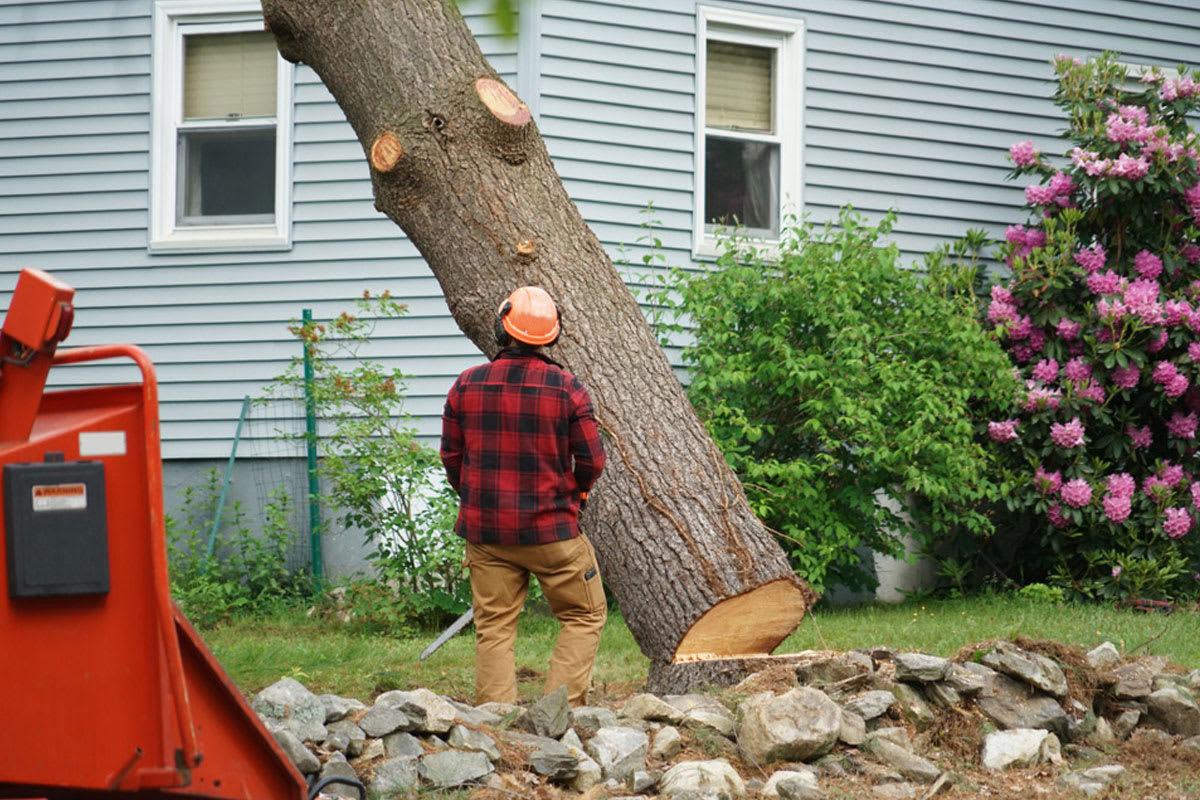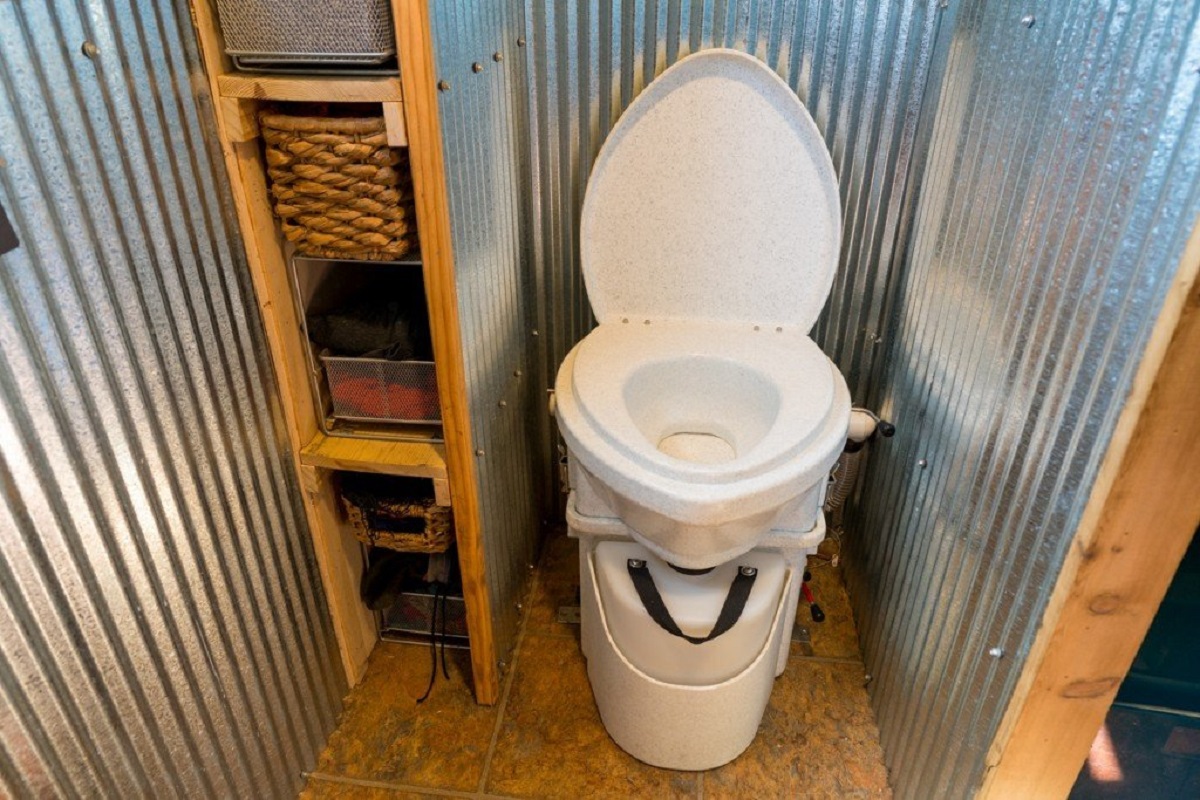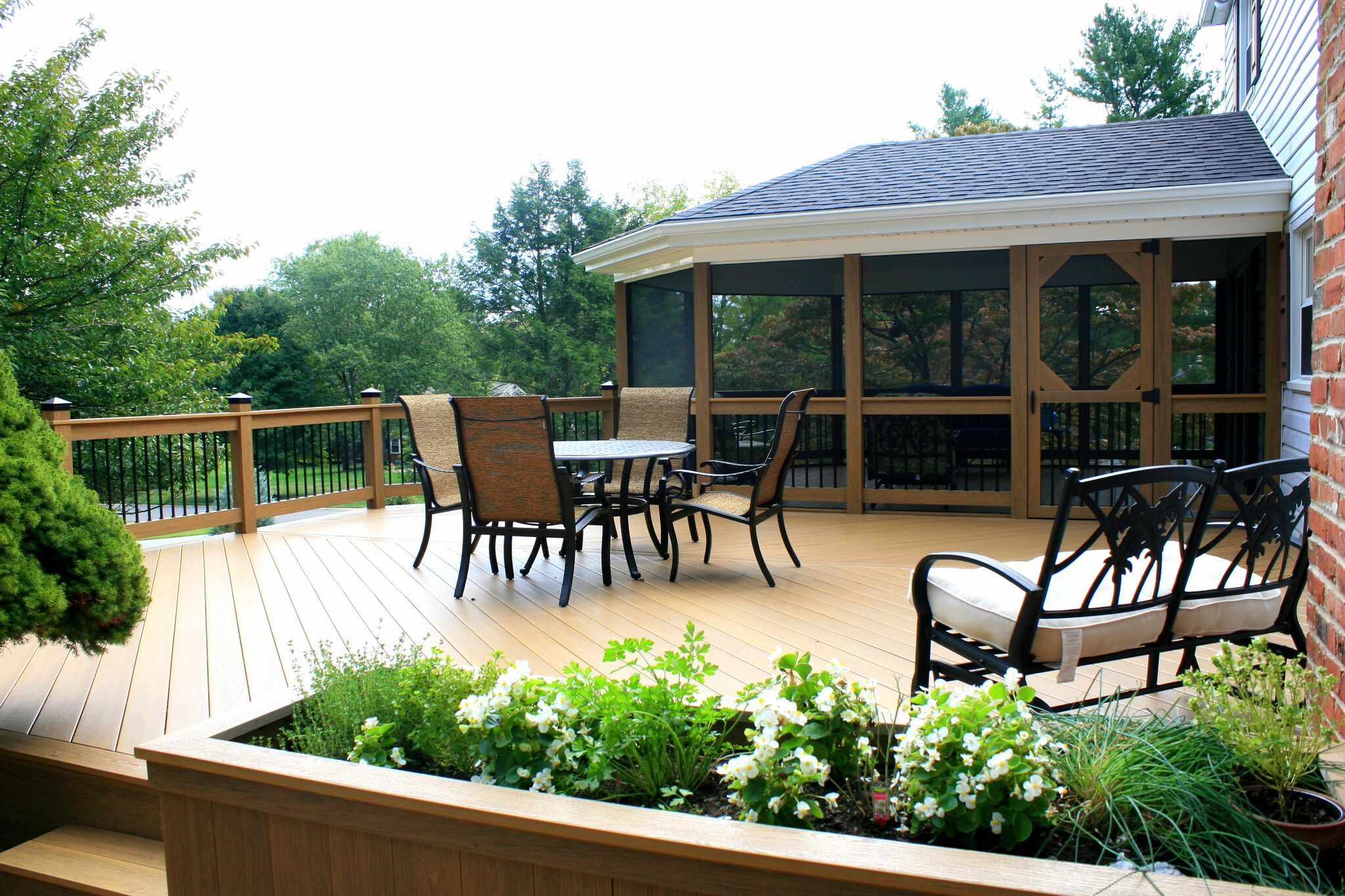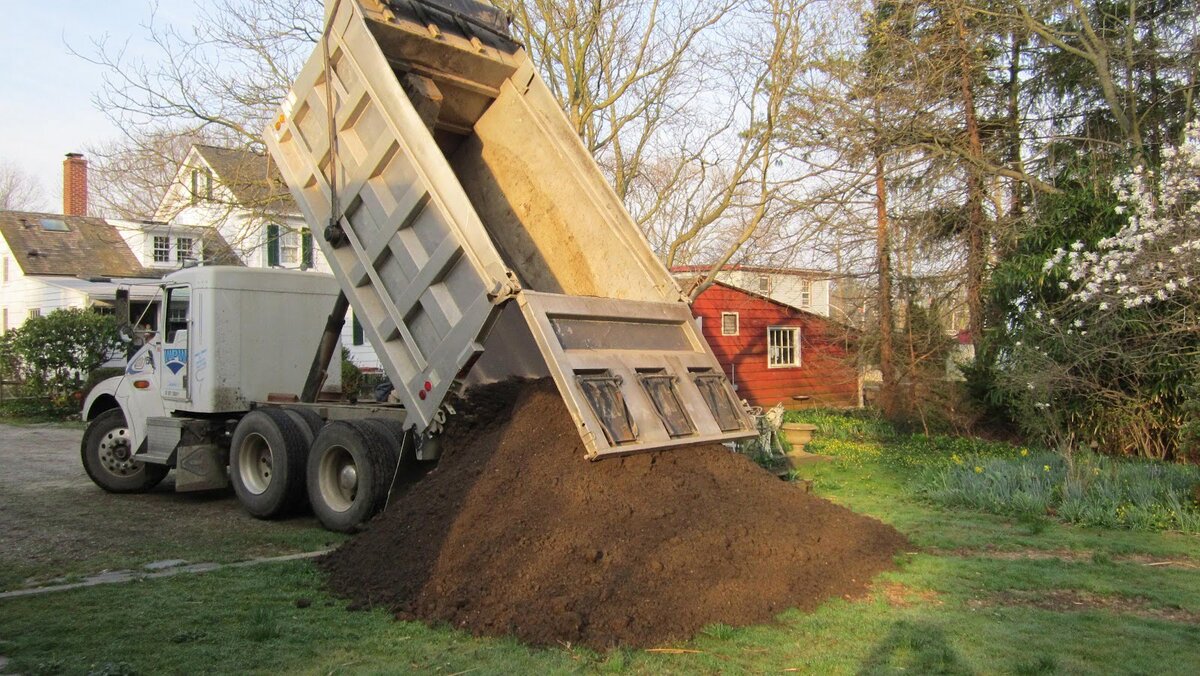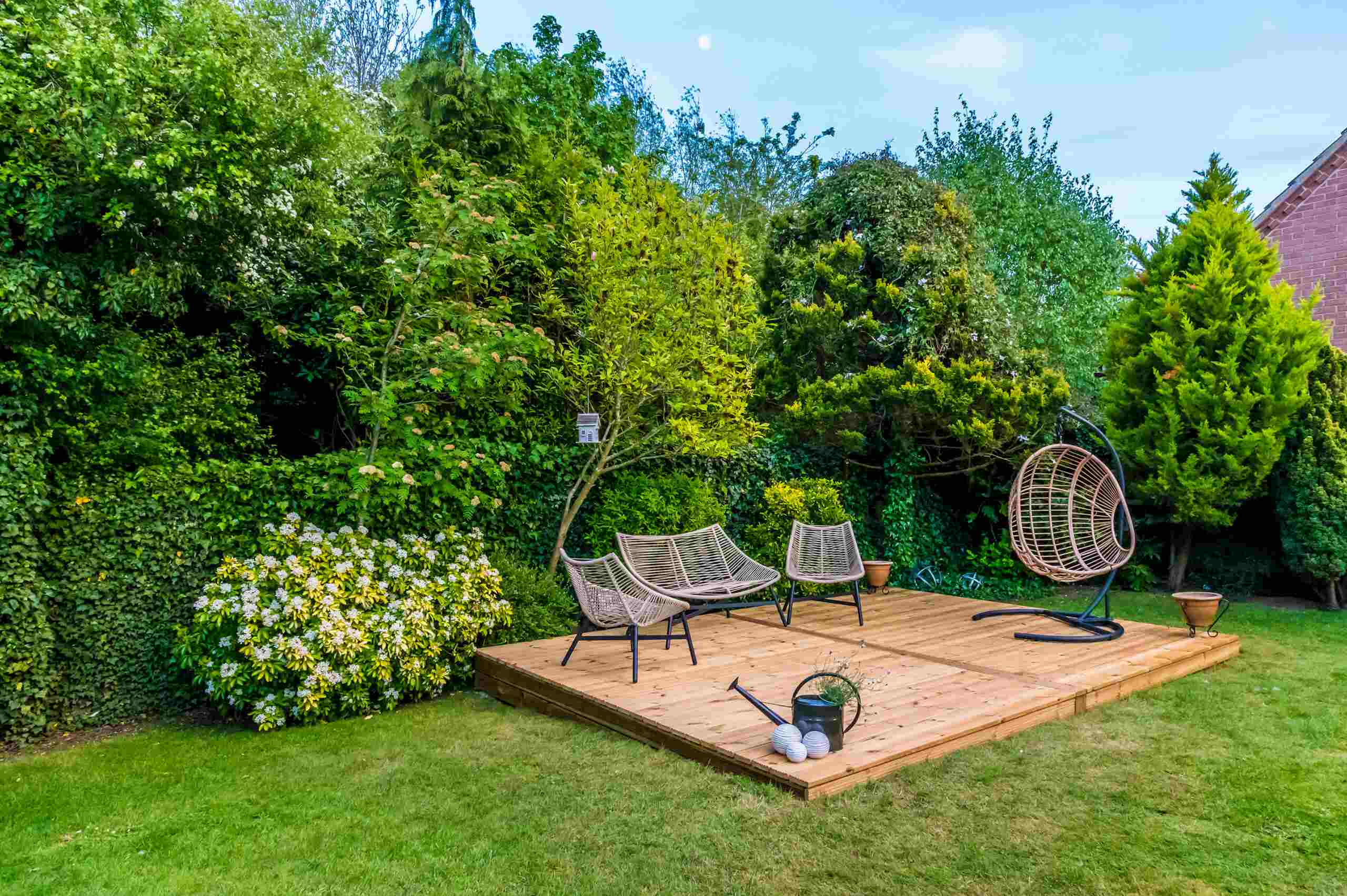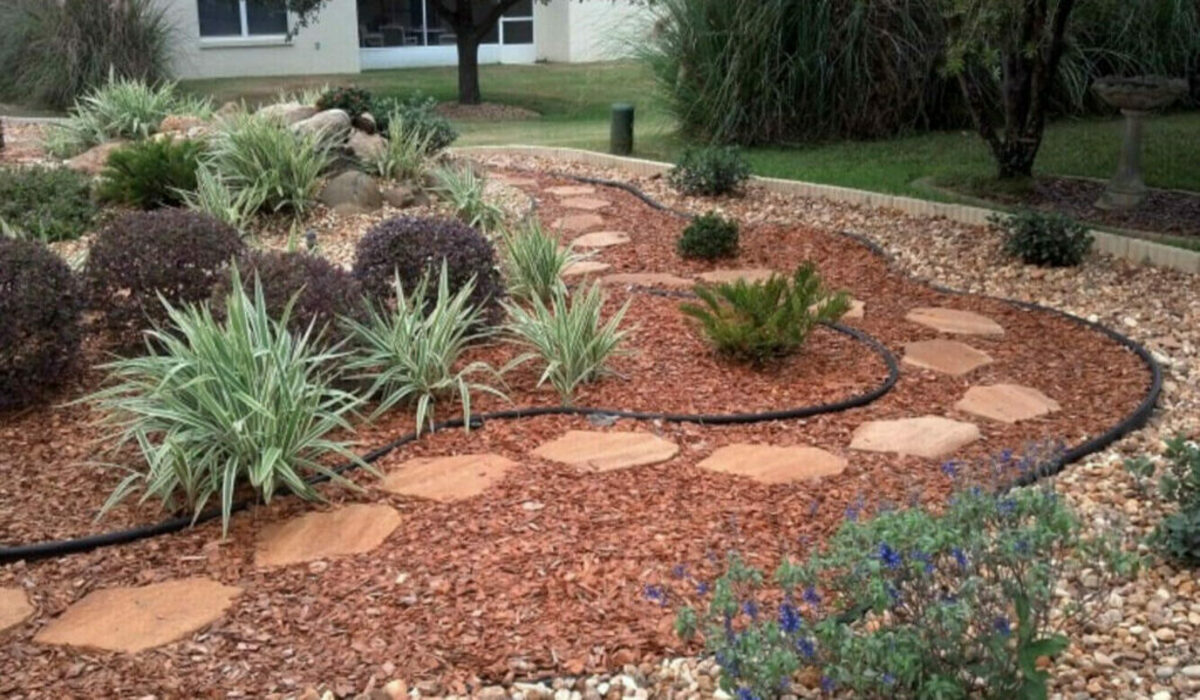Home>Gardening Basics>Getting Started>How Much Does Planting A Tree Cost
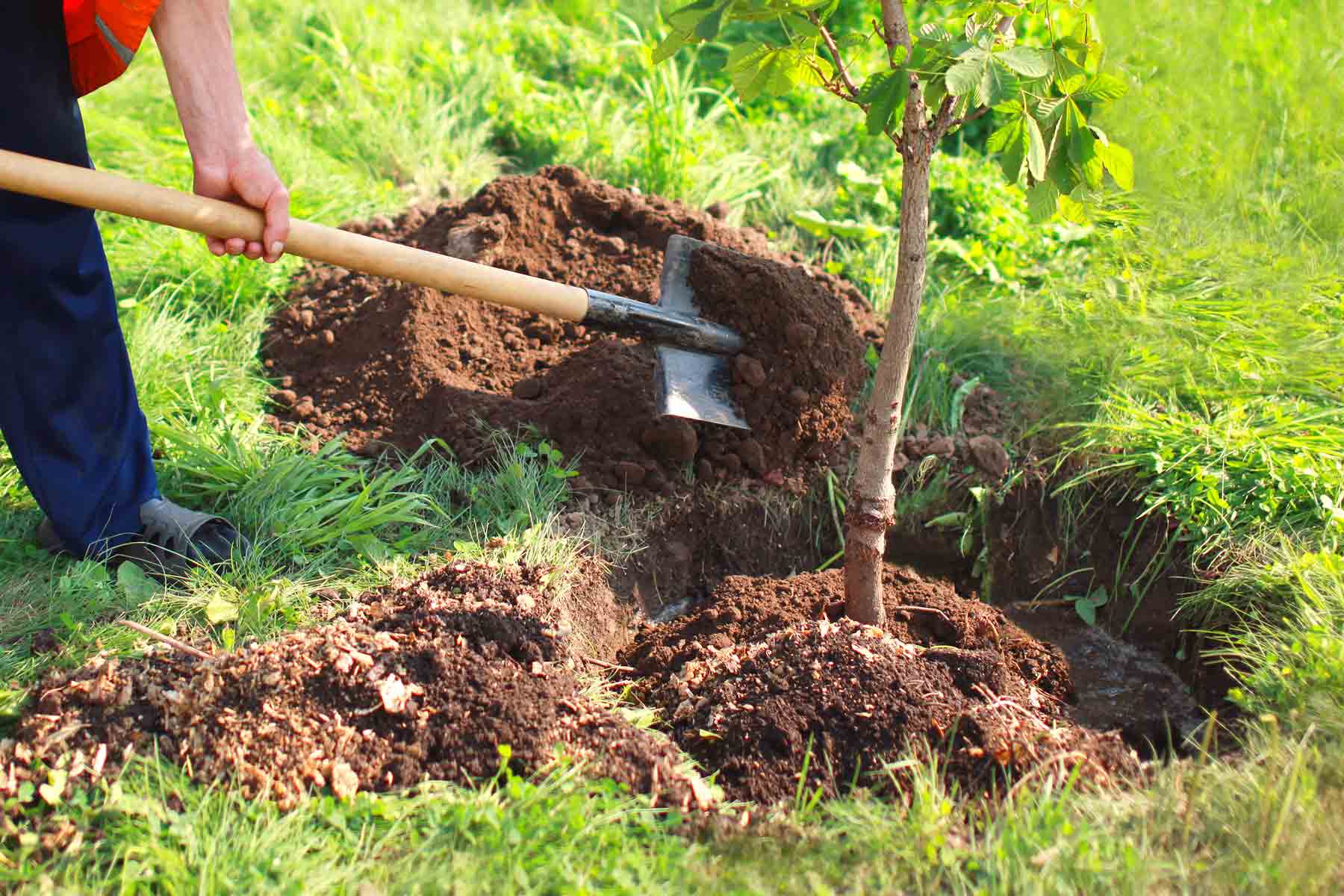

Getting Started
How Much Does Planting A Tree Cost
Modified: January 22, 2024
Discover the average cost of planting a tree and get started on creating a greener space. Learn about the factors that influence the cost and explore budget-friendly options.
(Many of the links in this article redirect to a specific reviewed product. Your purchase of these products through affiliate links helps to generate commission for Chicagolandgardening.com, at no extra cost. Learn more)
Table of Contents
Introduction
Planting trees is a worthwhile investment that offers numerous benefits to the environment, communities, and individuals. Trees help improve air quality, conserve energy, enhance property values, and provide shade and beauty. Whether you’re a homeowner looking to add greenery to your backyard or a land developer planning to create a new park, understanding the cost of tree planting is essential.
Planting a tree involves various factors that can affect the overall cost. From selecting the right tree species to site preparation and ongoing maintenance, each step contributes to the total expenses. By examining these factors, you can make informed decisions and effectively budget for your tree planting project.
In this article, we will explore the key factors that affect tree planting costs and provide insights into the various expenses involved. By the end, you will have a comprehensive understanding of the financial considerations associated with planting trees and be better prepared to embark on your own tree planting endeavor.
Factors Affecting Tree Planting Costs
Several factors come into play when determining the cost of planting a tree. These factors can significantly impact the overall expenses and should be carefully considered before starting your project.
1. Tree Selection: The type and size of the tree you choose will have a substantial influence on the cost. Rare or exotic tree species are typically more expensive than common varieties. Additionally, larger trees tend to be pricier upfront but may have a greater impact on the landscape immediately.
2. Tree Nursery: The source of the tree will also affect the cost. Trees purchased from a reputable nursery may have a higher price tag due to the quality and care taken in their cultivation.
3. Tree Delivery and Transportation: If the tree needs to be transported to your location, delivery fees will add to the total cost. Distance and logistics can impact these expenses.
4. Site Preparation: The condition of the planting site plays a crucial role in determining expenses. Clearing debris, removing existing vegetation, and leveling the ground may be necessary before planting the tree, especially for new construction projects.
5. Digging and Planting: The size and depth of the hole required to plant the tree can affect the cost. In some cases, heavy machinery such as a backhoe may be needed, resulting in additional charges.
6. Mulching: Mulching helps retain moisture, regulate soil temperature, and suppress weeds. The cost of materials and labor for mulching should be factored into the overall budget.
7. Watering and Maintenance: Newly planted trees require regular watering and maintenance during their initial establishment period. The cost of irrigation systems, watering schedules, and ongoing maintenance practices should be considered.
8. Tree Care and Pruning: Proper tree care, including pruning and shaping, improves tree health and longevity. Professional arborists may be required for these tasks, adding to the overall expenses.
9. Long-Term Maintenance: Beyond the initial planting and care, long-term maintenance, such as fertilization, pest control, and regular trimming, should be accounted for in your budget.
By considering these factors and assessing their impact on your project, you can better estimate the overall cost of planting a tree. Keep in mind that the expenses associated with tree planting are an investment in the long-term benefits and value that trees bring to your property or community.
Cost of Tree Selection
The type of tree you choose to plant plays a significant role in the overall cost of your tree planting project. The cost can vary depending on the rarity, availability, and size of the tree species.
Rare or exotic tree species tend to be more expensive due to their limited availability and higher demand. These trees may require specialized care and maintenance, which can further contribute to their higher price tag.
Common tree species, on the other hand, are generally more affordable and readily available. They are often easier to find in nurseries or garden centers, allowing for more competitive pricing.
The size of the tree you select also affects the price. Larger trees are generally more expensive upfront but can have a more immediate impact on the landscape. These trees provide instant shade, privacy, and aesthetic appeal, making them a popular choice for homeowners or developers looking for immediate results.
Smaller trees may be more budget-friendly, but they will take longer to reach their full maturity and provide the desired benefits. They are a good option for those who are willing to wait for the tree to grow and develop over time.
Consider your budget, project timeline, and desired outcome when selecting a tree. Research different tree species and their characteristics to find the best fit for your needs. Consulting with a local arborist or tree expert can also help you make an informed decision based on your specific location and climate.
While the cost of tree selection is an important factor, keep in mind the long-term benefits that trees offer. Their ability to improve air quality, provide shade, enhance property values, and contribute to the overall beauty of an area often outweigh the upfront expenses. Investing in the right tree for your project can provide a lasting impact for generations to come.
Cost of Tree Nursery
The choice of tree nursery plays a crucial role in the cost of your tree planting project. The quality and care taken in nurturing the trees can affect their price. Understanding the factors that influence nursery costs can help you make an informed decision.
Reputable tree nurseries invest time and resources in cultivating healthy and well-maintained trees. These trees have a higher survival rate and are more likely to thrive when transplanted to a new location. As a result, trees from reputable nurseries often come with a higher price tag.
However, the extra cost can be justified by the quality assurance provided by these nurseries. Purchasing trees from a reliable source reduces the risk of buying unhealthy or poorly developed specimens that may not survive or flourish in their new environment.
In addition to quality, the size and age of the trees can impact their price. Nurseries typically categorize their trees based on their size, such as saplings, young trees, or mature specimens. Larger trees are generally more expensive due to the extended cultivation time and the additional care required during their growth.
Some nurseries offer container-grown trees, which come with their own root ball and soil. These trees are ready to be transplanted and can be more expensive compared to bare-root trees, which usually require more care and attention during the planting process.
When selecting a tree nursery, it’s essential to consider the overall value and benefits that high-quality trees offer. They not only have a better chance of surviving and thriving but also provide immediate aesthetic appeal and long-term benefits to the environment.
Take the time to research different nurseries in your area, read reviews, and inquire about their tree cultivation practices. Consult with local arborists or tree experts who can recommend reputable nurseries and guide you in selecting the best trees for your project.
Remember, investing in trees from a reputable nursery may incur higher upfront costs, but it can ultimately save you money and headaches by ensuring the success and longevity of your tree planting project.
Cost of Tree Delivery and Transportation
When planning a tree planting project, it’s important to consider the cost of tree delivery and transportation. This expense can vary depending on several factors, including the distance between the nursery and the planting site, the size of the tree, and any special handling requirements.
If the tree nursery is located far from your planting site, transportation costs will likely increase. Longer distances may require additional fees for fuel, labor, and vehicle maintenance. It’s important to factor in these expenses when budgeting for your project.
The size of the tree can also impact transportation costs. Larger trees require specialized equipment and vehicles for safe and efficient transportation. This may result in higher fees due to the need for heavy-duty trucks or cranes to lift and transport the trees.
Furthermore, some tree species may have specific transportation requirements. For example, trees with delicate branches or fragile root systems may require extra care during transportation. This could involve additional packaging, padding, or securing techniques to ensure the tree’s safety while in transit.
To minimize transportation costs, consider sourcing trees from local nurseries whenever possible. Local nurseries often have shorter delivery distances, reducing the associated costs. Additionally, choosing smaller-sized trees or container-grown trees can also help lower transportation expenses.
Before finalizing your tree purchase, inquire about transportation costs from the nursery. Understand what services are included and if there are any additional charges for special handling or delivery to difficult-to-access locations.
If you have the means and equipment, you may also opt to transport the trees yourself. However, ensure you have the necessary knowledge and experience to handle and transport trees safely to avoid any damage or losses during transit.
By carefully considering the cost of tree delivery and transportation, you can ensure that this aspect of your tree planting project is accounted for in your budget. Remember, investing in safe and efficient transportation is vital to protect the health and integrity of the trees you’ve selected for planting.
Cost of Site Preparation
Site preparation is an essential step in tree planting projects and can contribute significantly to the overall cost. Properly preparing the planting site ensures optimal growth conditions for the tree and improves its chances of survival.
The cost of site preparation can vary depending on the existing condition of the area and the specific requirements of your project. Here are some factors to consider:
Clearing and Excavation: If the planting site is overgrown with vegetation or obstructed by debris, clearing and excavation may be necessary. This can involve removing grass, weeds, rocks, or existing trees that are not part of the desired landscape. The cost will depend on the size of the area and the difficulty of the clearance.
Soil Testing and Amendment: Conducting soil tests to assess its composition and nutrient levels can help determine the need for amendments. Adding organic matter, such as compost or fertilizers, may be required to improve soil quality and provide the tree with essential nutrients. The cost of soil testing and amendments should be factored into the budget.
Drainage Management: In areas with poor drainage or excessive water accumulation, additional measures may be needed to ensure the tree’s survival. This can include the installation of drainage systems or adjusting the terrain to redirect water flow. The cost will depend on the complexity of the drainage solution required.
Leveling and Grading: If the planting site is uneven or requires grading for proper water distribution, additional work may be needed. This can involve using machinery to level the ground or create slopes to promote water drainage. The cost will depend on the size and condition of the area.
It is important to assess the current state of the planting site and determine the specific needs for site preparation. Consulting with a professional landscaper or arborist can provide valuable insights and help estimate the costs associated with site preparation.
Remember that proper site preparation sets the foundation for a successful tree planting project. Investing in this crucial step will ensure that the tree has the best possible chance of thriving and establishing itself in its new environment.
Cost of Digging and Planting
The process of digging the hole and properly planting the tree is a critical step in any tree planting project. The cost associated with this phase can vary depending on factors such as the size of the tree, the soil type, and the accessibility of the planting site.
The size of the tree plays a significant role in the cost of digging and planting. Larger trees require larger holes, which can be more labor-intensive and time-consuming. The use of heavy machinery, such as backhoes or tree spades, may be necessary for digging large holes, resulting in additional expenses.
The soil type also affects the cost of digging and planting. Soils that contain rocks, clay, or other challenging conditions may require more effort and specialized equipment to dig the hole. In such cases, the cost may increase to accommodate the extra labor and equipment required.
Accessibility to the planting site is another consideration. If the site is easily accessible, with sufficient space for equipment, the cost of digging and planting may be lower. However, if the planting location is difficult to reach or has limited space for equipment maneuverability, additional time and effort may be required, which can result in higher costs.
In some cases, professional expertise may be needed to ensure that the tree is planted correctly. Hiring an experienced arborist or tree planting service can add to the cost, but it provides the assurance that the tree is being planted with proper techniques and care.
When estimating the cost of digging and planting, it is important to consider the overall value and long-term benefits that a properly planted tree brings. Investing in expert planting techniques and ensuring the tree’s establishment can help prevent complications and guarantee the tree’s health and growth in the future.
Be sure to obtain quotes from qualified tree planting professionals and discuss any specific requirements or challenges related to your planting site. This will help you budget accordingly and ensure a successful and long-lasting tree planting project.
Cost of Mulching
Mulching is an important step in tree planting projects as it provides numerous benefits, including moisture retention, weed suppression, and soil temperature regulation. While mulching is typically an affordable component of the overall project, it is still important to consider its cost and the materials involved.
There are various types of mulch available, including organic and inorganic options. Organic mulches, such as bark chips, wood shavings, or compost, are more commonly used as they break down over time, enriching the soil with nutrients. Inorganic mulches, like gravel or rubber chips, can also be used, but they do not provide the same soil-enhancing benefits.
The cost of mulching can vary depending on factors such as the size of the planting area, the thickness of the mulch layer, and the type of mulch chosen. Organic mulches are generally more affordable than inorganic materials, but their prices can vary based on availability and quality.
In addition to the cost of the mulch material itself, there may be labor costs associated with the application of mulch. Some homeowners or property owners choose to lay mulch themselves, while others prefer to hire professionals to ensure proper mulching techniques and coverage.
When calculating the cost of mulching, consider the quantity of mulch needed to cover the desired area adequately. A recommended mulch depth of 2-4 inches is typically sufficient for most tree planting projects. However, larger planting areas or trees may require more mulch, increasing the overall cost.
It is important to remember that while there is an upfront cost associated with mulching, the long-term benefits outweigh the expense. The use of mulch helps conserve soil moisture, reduce weed competition, and create a favorable environment for root growth. This can result in healthier and more vigorous tree growth, reducing the need for additional maintenance and associated costs.
Consult with local garden centers, landscaping professionals, or arborists to determine the most appropriate type and quantity of mulch for your specific tree planting project. They can provide guidance on cost-effective options and ensure that the chosen mulch enhances the health and growth of your newly planted trees.
Cost of Watering and Maintenance
After planting a tree, proper watering and maintenance are crucial to ensure its survival and healthy growth. While these tasks may require ongoing effort and resources, the long-term benefits make them a worthwhile investment.
The cost of watering will depend on factors such as the size and type of tree, climate conditions, and the availability of water sources. Newly planted trees require regular watering, especially during their first year, to help establish their root system. This may involve manual watering with a hose or the installation of an irrigation system.
Consider the cost of water usage and the time required to water the trees. If you have a large number of trees or a large planting area, it may be more efficient and cost-effective to set up an automated irrigation system. On the other hand, smaller-scale projects may rely on manual watering methods.
Maintenance tasks, such as pruning, fertilizing, and monitoring for pests or diseases, also play a vital role in tree health. The cost of maintenance will depend on the specific requirements of the tree species and any professional assistance needed.
If you have the knowledge and experience, you may be able to perform basic maintenance tasks yourself. However, for more complex pruning or diagnosis of tree issues, it is recommended to consult with an arborist or tree care professional. Their expertise can help ensure the proper care and longevity of your trees, but it may involve additional costs.
When considering the cost of watering and maintenance, it is important to see them as investments in the long-term health and vitality of your trees. Proper watering and maintenance can prevent potential problems, reduce the risk of tree decline, and extend the lifespan of the trees.
Additionally, healthy and well-maintained trees can provide various benefits, such as shade, beauty, increased property value, and improved air quality. These advantages often outweigh the costs associated with watering and regular maintenance.
Consult with local tree care professionals or arborists to determine the specific watering and maintenance needs of the tree species you have planted. They can provide guidance on proper techniques, timing, and any associated costs, ensuring the continued health and success of your tree planting project.
Cost of Tree Care and Pruning
Proper care and pruning of trees are essential for their long-term health and vitality. While there may be costs associated with tree care and pruning, these investments can significantly enhance the overall well-being and longevity of your trees.
Tree care and pruning costs can vary depending on factors such as the size and type of tree, the complexity of the pruning required, and whether you hire a professional arborist or perform the tasks yourself.
For more intricate pruning tasks, such as crown thinning, crown raising, or removal of dead or diseased branches, it is generally recommended to seek the expertise of a professional. Experienced arborists can assess the tree’s structure, identify potential hazards, and employ proper pruning techniques to enhance its health and safety.
The cost of professional tree care and pruning services can range depending on factors such as the tree’s size, location, and complexity of the work involved. Arborists often provide estimates based on an evaluation of your trees and their specific needs.
Performing tree care and pruning tasks yourself can help reduce costs, but it requires knowledge, experience, and proper tools. It is important to understand and follow correct pruning techniques to prevent damage to the tree. Improper pruning can lead to long-term harm, affecting the tree’s health and aesthetics.
Regular tree care and pruning are essential for maintaining tree health, promoting optimal growth, and preventing potential hazards. By investing in these practices, you can alleviate future issues and reduce the risk of branch failures, disease, or structural problems.
Additionally, proper tree care and pruning contribute to the overall aesthetics of your landscape, enhancing the beauty and value of your property.
When budgeting for tree care and pruning, consider the long-term benefits and potential savings in terms of tree health and property maintenance. Consult with local arborists or tree care professionals to get a comprehensive evaluation of your trees’ needs and to determine the most suitable course of action.
Remember, tree care and pruning should be viewed as ongoing investments in the health, safety, and aesthetic appeal of your trees rather than a mere cost.
Cost of Long-Term Maintenance
Long-term maintenance is a crucial aspect of tree care that ensures the continued health, vigor, and longevity of your trees. While there may be costs associated with ongoing maintenance, the benefits and value that well-maintained trees bring to your property and environment make it a worthwhile investment.
The cost of long-term maintenance can vary depending on factors such as the size and type of tree, the required frequency of maintenance tasks, and whether you choose to perform the maintenance yourself or hire a professional.
Maintenance tasks typically include regular watering, fertilization, pest and disease control, and periodic pruning. The specific needs of your trees will depend on their species, location, and overall health.
Watering is particularly crucial during periods of drought or when trees are newly planted. The frequency and duration of watering will depend on factors such as soil moisture levels, weather conditions, and the specific requirements of your trees.
Fertilization provides essential nutrients for healthy growth. The cost of fertilizers will vary depending on the type and quality of the product chosen. It’s important to follow proper application techniques and consider factors such as soil composition, existing nutrient levels, and tree requirements.
Pest and disease control measures may be necessary to protect your trees from insect infestations, fungal infections, or other health threats. The cost of control methods can vary depending on the severity of the issue and the recommended treatment options.
Pruning plays a crucial role in maintaining tree structure, removing dead or diseased branches, and promoting proper growth. The cost of pruning will depend on factors such as the size and complexity of the tree, the pruning techniques required, and whether professional services are used.
While it is possible to perform some maintenance tasks on your own, others may require the expertise and equipment of professional arborists or tree care specialists. Hiring professionals ensures that maintenance tasks are performed correctly and reduces the risk of damage to the tree or potential safety hazards.
When planning for long-term maintenance costs, consider the overall value that well-maintained trees provide. They enhance the beauty of your landscape, provide shade and habitat, contribute to improved air quality, and increase property value. Account for ongoing maintenance expenses in your budget to ensure the continued health and beauty of your trees.
Consult with local arborists, tree care professionals, or extension services to assess the specific needs of your trees and determine the appropriate long-term maintenance practices. They can provide guidance on the frequency, duration, and techniques required for optimal tree care and maintenance while considering your budgetary constraints.
Conclusion
Planting trees is an investment that brings numerous benefits to the environment, communities, and individuals. Understanding the various factors that contribute to the cost of tree planting is essential in planning and budgeting for your project.
Factors such as tree selection, tree nursery costs, transportation expenses, site preparation, and ongoing maintenance should all be taken into account. By considering each of these factors, you can make informed decisions and ensure the success and long-term health of your trees.
While there are costs associated with tree planting and maintenance, it is important to view them as investments in the environment and property enhancement. Trees provide numerous benefits, such as improved air quality, energy conservation, increased property value, and aesthetic appeal.
When undertaking a tree planting project, carefully consider the specific needs of the tree species you have chosen, the site conditions, and any ongoing care requirements. Consulting with arborists, tree care professionals, and local experts can provide valuable guidance and ensure that you make informed decisions.
Remember, the overall value that trees bring extends far beyond the initial expenses. They have the potential to provide beauty, shade, and a range of environmental benefits for generations to come. With proper planning, budgeting, and care, your tree planting project can be a rewarding and impactful investment in the future.
